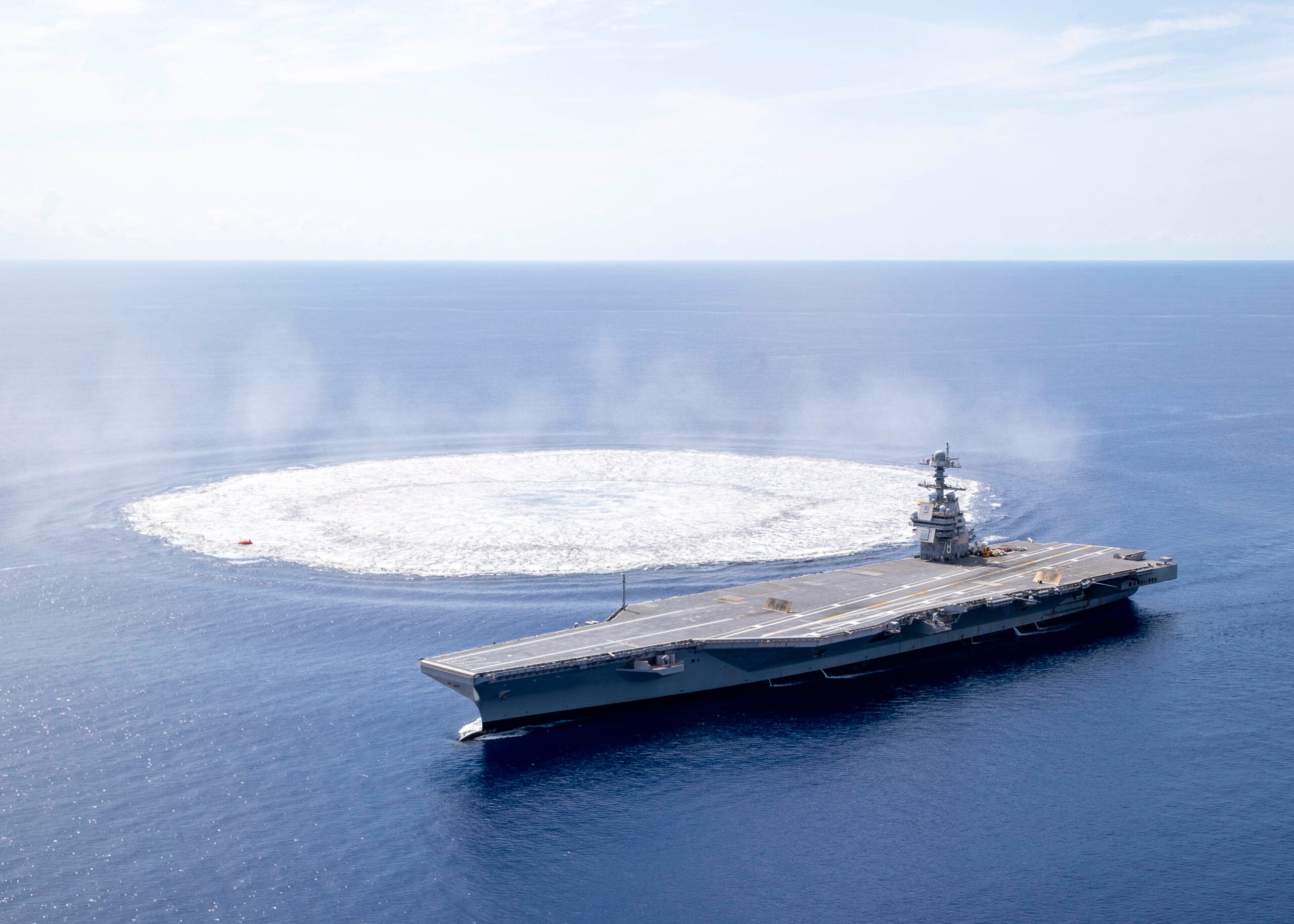
The US Navy’s aircraft carrier USS Gerald R Ford (CVN 78) has completed the first scheduled explosive event in the Atlantic Ocean.
The event was carried out as part of the carrier’s Full Ship Shock Trials (FSST).
The US Navy uses live explosives to confirm the design of new ships and test their ability to withstand and perform in battle like conditions.
The trials align with Office of the Chief of Naval Operations Instruction 9072.2, and as advised by the National Defense Authorization Act of 2016.
In a press statement, US Navy stated: “Ford’s shock trials are being conducted off the East Coast of the United States, within a narrow schedule that complies with environmental mitigation requirements, respecting known migration patterns of marine life in the test area.
“The Navy also has employed extensive protocols throughout FSST to ensure the safety of military and civilian personnel participating in the testing evolution.”
In April, CVN 78 achieved a key milestone during the final independent steaming event of an 18-month Post Delivery Test & Trials (PDT&T) period.
Advanced Arresting Gear (AAG) and Electromagnetic Aircraft Launch System (EMALS), a new aircraft launch and recovery technology, completed 8,000 aircraft recoveries and launches aboard the aircraft carrier.
During the PDT&T period, the ship’s crew also completed all required testing, accomplished planned improvements and maintenance ahead of schedule.
Upon completion of the FSST trials, CVN 78 will enter a six-month Planned Incremental Availability (PIA) of modernisation, maintenance, and repairs before it becomes operational.
The USS Theodore Roosevelt (CVN 71) was the last aircraft carrier to execute FSST in 1987.
In March last year, a F/A-18E Super Hornet attached to Blue Blasters of Strike Fighter Squadron (VFA) 34 landed aboard USS Gerald R Ford’s flight deck, marking the 1,000th recovery milestone of a fixed-wing aircraft using Ford’s AAG.



